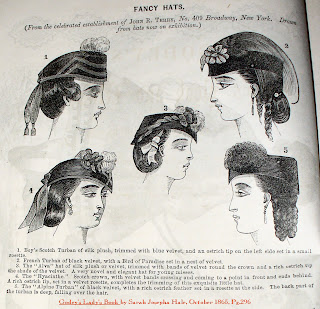 |
| Image courtesy of the New-York Historical Society |
Tensions were high in 1861 and even before the first shots were fired, men and boys lined up to join the coming fight. As loved ones left home and took their spots in rank, the wives, sisters, mothers and children at home were busy doing their part to keep their loved ones safe and as comfortable as possible. Women formed handiwork groups and people commented that girls no longer sat idle in public at any time but were always working on some garment for the soldiers.
Many organizations were created or took part in collecting items for the soldiers. Money, foodstuffs and clothing made up the bulk of donations and organizations were not shy in their requests for items:
"WOOLLEN MITTENS.—An officer from West Point who commands one of the finest regiments in the service, suggests that woollen [sic] mittens for the soldiers will be greatly needed when the cold weather begins. Will not all who can employ themselves in this way, help to furnish 500,000 pairs? They should be knit with one finger to allow the free use of the first finger and thumb. It is said there were more soldiers disabled in the Crimean war from frost bitten fingers than from any other cause."
-Delaware State Journal and Statesman, November 5, 1861
"Knit-knit-knit-
With a warm heart and a true!
Knit-knit-knit-
The stockings warm and new.
The mittens with a finger and thumb complete,
The gloves for the drummers their drums to beat-
And the nice warm socks for the shivering feet-"
As the war raged on, the pattern stopped appearing in publications, likely due to the war frenzy dying down. Women were still knitting and sewing items but many utilized the patterns they had collected early on.
By January 1865, E.A. Paul, a correspondent from the New York Times to Sheridan's army reported that the weather had been cold, icy and wet and that 1 out of 4 soldiers did not have mittens. He postulated that the extra money spent on Christmas dinners could have covered the expense of the 50,000 pairs of mittens the army needed.
Different versions of the pattern:
Click here for a modern pattern for "Shooter's Mitts."
References:
http://historydetectives.nyhistory.org/2014/04/blast-from-the-past-mittens-and-slippers-during-the-american-civil-war/
http://cyrusforwood.blogs.delaware.gov/tag/us-sanitary-commission/



































